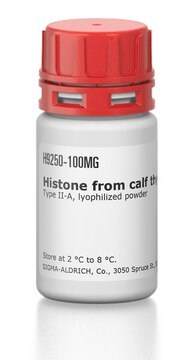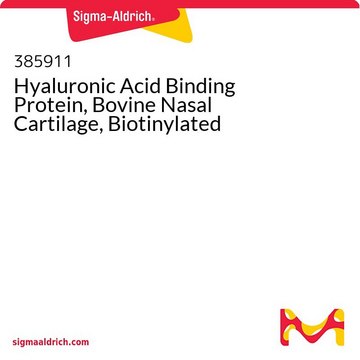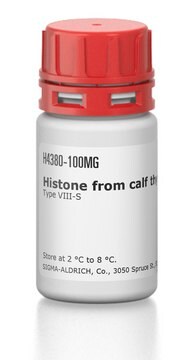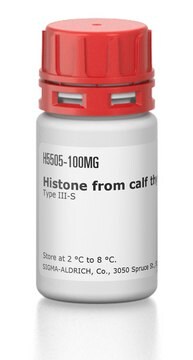H7157
Anti-Hepatocyte Growth Factor antibody produced in goat
affinity isolated antibody, lyophilized powder
Synonym(s):
Anti-HGF
Sign Into View Organizational & Contract Pricing
All Photos(1)
About This Item
Recommended Products
biological source
goat
Quality Level
conjugate
unconjugated
antibody form
affinity isolated antibody
antibody product type
primary antibodies
clone
polyclonal
form
lyophilized powder
species reactivity
human
technique(s)
immunohistochemistry (formalin-fixed, paraffin-embedded sections): 15 μg/mL using human tissue
western blot: 0.1-0.2 μg/mL
UniProt accession no.
application(s)
research pathology
storage temp.
−20°C
target post-translational modification
unmodified
Gene Information
human ... HGF(3082)
General description
Hepatocyte Growth Factor (HGF) also refers as Scatter Factor and Hematopoietin A is a 82-85 kD potent mitogen for epithelial cells. It has a critical role in stimulating the growth of hepatocytes, epidermal keratinocytes, Mv1Lu (mink lung epithelial cells), renal tubular epithelial cells, epidermal melanocytes and BALB/MK (mouse keratinocytes) . Anti-Hepatocyte Growth Factor antibody can be used to neutralize the biological activity of recombinant human HGF (rhHGF). Goat anti-Hepatocyte Growth Factor antibody reacts specifically with recombinant human HGF (rhHGF).
Specificity
The antibody will neutralize the biological activity of recombinant human HGF.
Immunogen
recombinant human HGF.
Application
Anti-Hepatocyte Growth Factor antibody can be used in immunohistochemistry and western blotting.
Physical form
Lyophilized from 0.2 μm filtered solution of phosphate buffered saline, pH 7.4, containing 5% trehalose.
Disclaimer
Unless otherwise stated in our catalog or other company documentation accompanying the product(s), our products are intended for research use only and are not to be used for any other purpose, which includes but is not limited to, unauthorized commercial uses, in vitro diagnostic uses, ex vivo or in vivo therapeutic uses or any type of consumption or application to humans or animals.
Not finding the right product?
Try our Product Selector Tool.
related product
Product No.
Description
Pricing
Storage Class Code
11 - Combustible Solids
WGK
WGK 3
Flash Point(F)
Not applicable
Flash Point(C)
Not applicable
Personal Protective Equipment
dust mask type N95 (US), Eyeshields, Gloves
Choose from one of the most recent versions:
Already Own This Product?
Find documentation for the products that you have recently purchased in the Document Library.
D Kovacs et al.
The British journal of dermatology, 163(5), 1020-1027 (2010-07-29)
Cutaneous pigmentation is regulated by a complex melanogenic network in which both keratinocytes and fibroblasts synthesize growth factors and cytokines. Solar lentigo (SL) is characterized by hyperpigmented lesions occurring on photodamaged skin areas. Despite the association of SL to ultraviolet
Rosaria Cammarota et al.
Journal of translational medicine, 8, 112-112 (2010-11-10)
Colorectal cancer can be efficiently treated when found at early stages, thus the search for novel markers is of paramount importance. Since inflammation is associated with cancer progression and angiogenesis, we investigated expression of cytokines like IL-6 and other mediators
A Catizone et al.
Molecular and cellular endocrinology, 241(1-2), 32-40 (2005-06-21)
Hepatocyte growth factor regulates many cellular functions acting through c-met, its specific receptor with tyrosine kinase activity. We have previously reported that in prepubertal rats HGF is secreted in the seminiferous tubules by purified peritubular myoid cells whereas Sertoli cells
Hong-Zheng Zhang et al.
Endocrinology, 143(9), 3427-3434 (2002-08-24)
Epithelial-stromal cell interactions are important for normal development and function of the mouse mammary gland. The steroid hormone estrogen is required for epithelial cell proliferation and ductal development in vivo. Recent studies of estrogen receptor alpha knockout mice indicate that
R A Furlong
BioEssays : news and reviews in molecular, cellular and developmental biology, 14(9), 613-617 (1992-09-01)
Hepatocyte growth factor, a potent mitogen for epithelial and other cell types, and scatter factor, a stimulant of epithelial cell motility are identical. In addition to these mitogenic and motogenic functions, the factor has been shown to be an epithelial
Our team of scientists has experience in all areas of research including Life Science, Material Science, Chemical Synthesis, Chromatography, Analytical and many others.
Contact Technical Service





